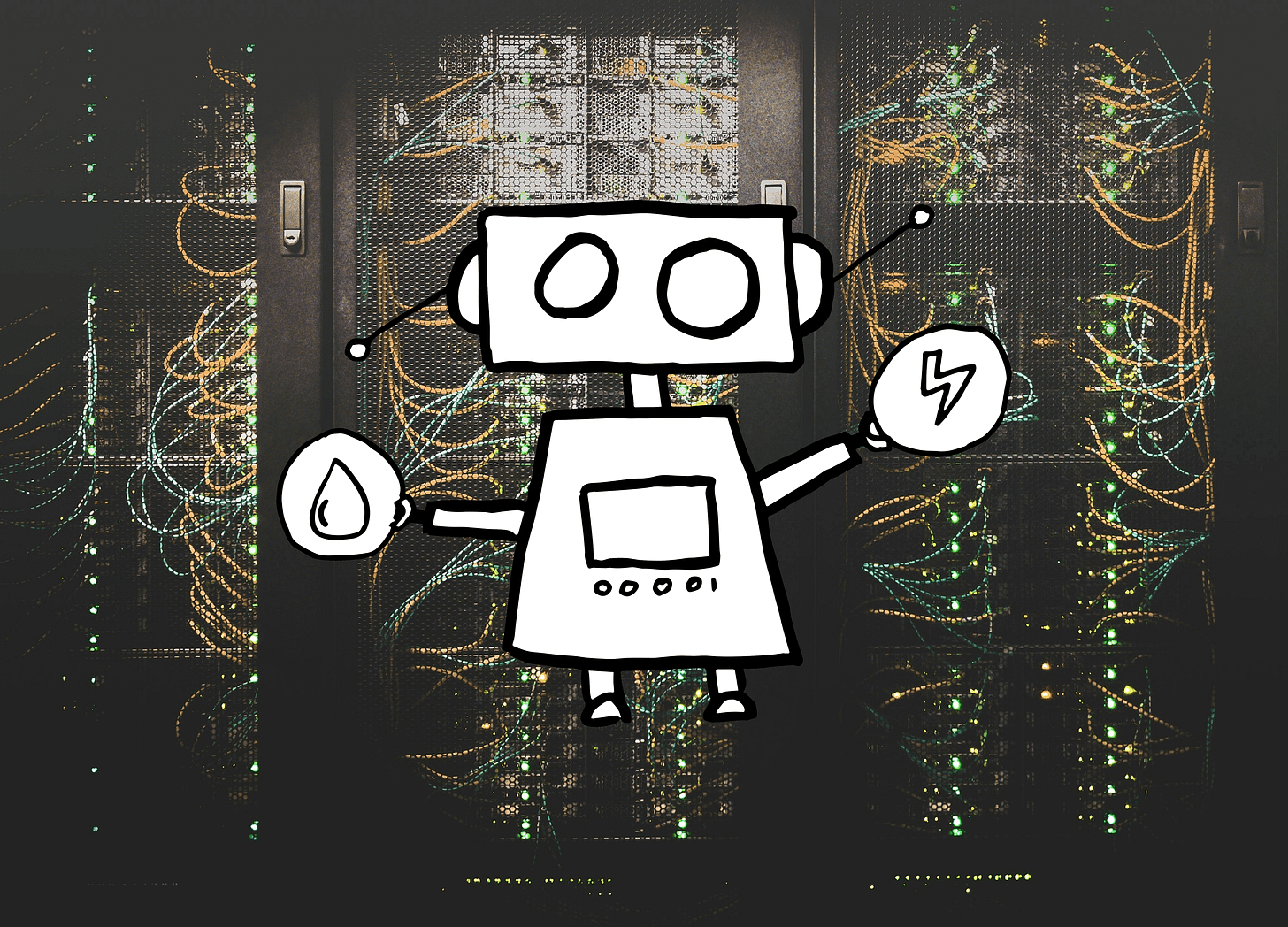🤖 The Climate Risk of Artificial Intelligence
ChatGPT emits 60 times more CO2 than a google search.
Hey there 👋
We don’t realize to what extent that artificial intelligence (AI) has become a part of our lives. From your email spam filters, your discover weekly playlist on Spotify, to Face ID on iPhones. Using AI is not a choice—its the reason why technology has become so powerful. AI doesn’t just make our lives more convenient it has the potential to change our lives for the better. Pfizer used it to speed up the development and testing of their COVID vaccine, saving countless lives.
AI does have its share of problems though. Amazon had to scrap it’s sexist AI recruitment tool as it taught it self that male candidates were better. AI systems teach themselves to find patterns based on their training data, trying to reach the most likely predictions to increase accuracy. And if that training dataset consists mainly of male candidates as in the case of Amazon, then the algorithm teaches itself that men are better.
A less discussed aspect of AI is its impact on the climate. The training and running of AI systems requires vast computing resources that use a lot of electricity and water for cooling. Data centers consume 1.5% of global electricity. And if AI adoption trends continue NVIDIA will need to ship 1.5 million AI server units per year by 2027. If these 1.5 million servers run at full capacity they’ll consume more electricity than Belgium. A single query on an AI-powered large language model like ChatGPT emits 60 times more CO2 than a google search. And, depending on server location and time of year, 5 to 50 prompts of ChatGPT consumes 500ml of water for cooling.
Microsoft is betting large on AI—they invested $13 billion in OpenAI the developer of ChatGPT and will spend billions more to expand their data center capacity. This focus on AI has lead to a massive jump in resource consumption. In 2022 their electricity and water consumption increased by one-third. In the last month of OpenAI training GPT-4, its most advanced model, a data center cluster in West De Moines Iowa consumed 6 percent of the district’s water. Google wasn’t far behind, with their water use increasing by 22 percent in 2022. Considering that both Google and Microsoft are worldwide, established corporations these astronomical jumps in resource consumption over the course of a single year should ring some alarm bells. As AI models get more complex the thirst for resources will only continue to grow.
Balancing the good and the bad of artificial intelligence will be key in the coming years. OpenAI founder Sam Altman warned that the next generation of generative AI systems will consume more energy than expected–he said “There’s no way to get there without a breakthrough”.
AI will help us tackle climate change—making batteries more efficient, helping predict extreme weather, improving leakage detection in water systems, and the list goes on—but at what cost. Is the net positive worth the strain on resources?
Until next time, much love,
Pascal Vilhelmsson 🖤
Want to support my writing? Share this post on LinkedIn, Instagram, or forward it to a friend!
Photo by Taylor Vick on Unsplash. Drawing by me.




